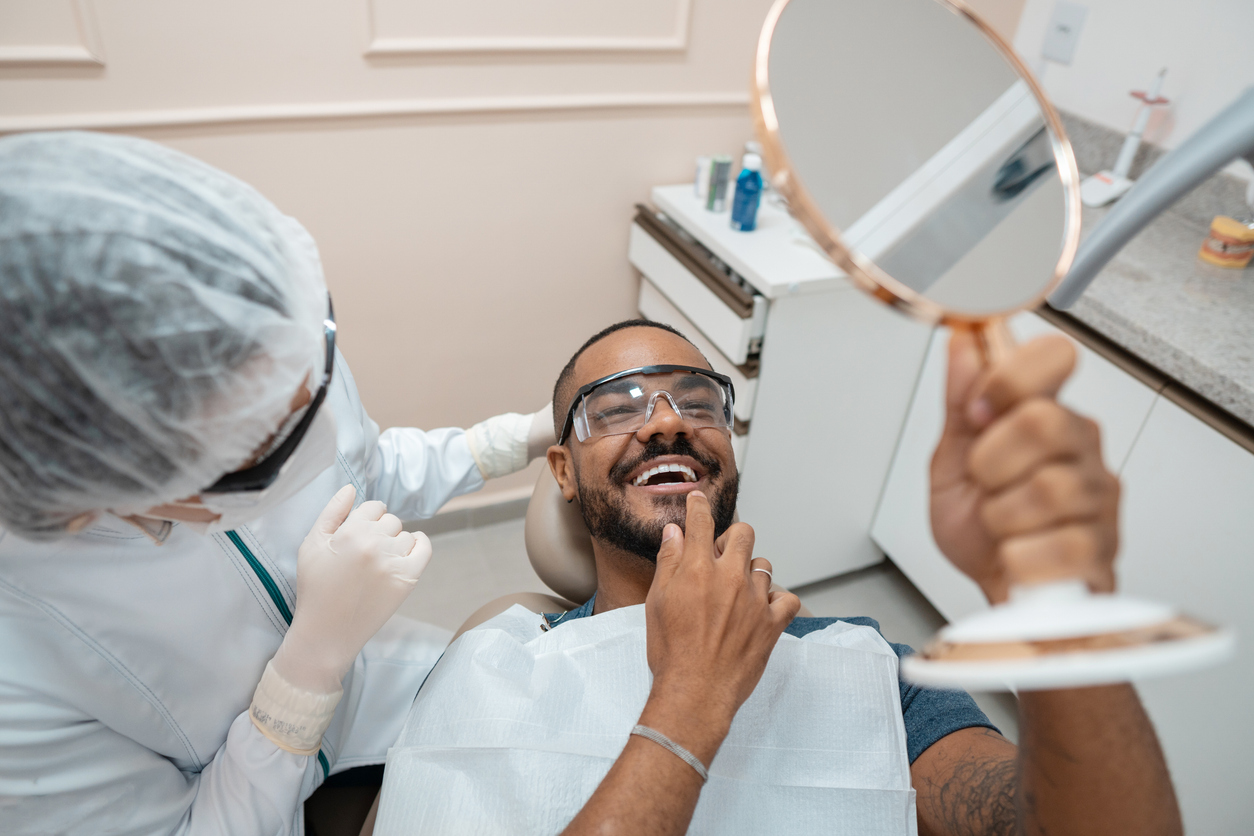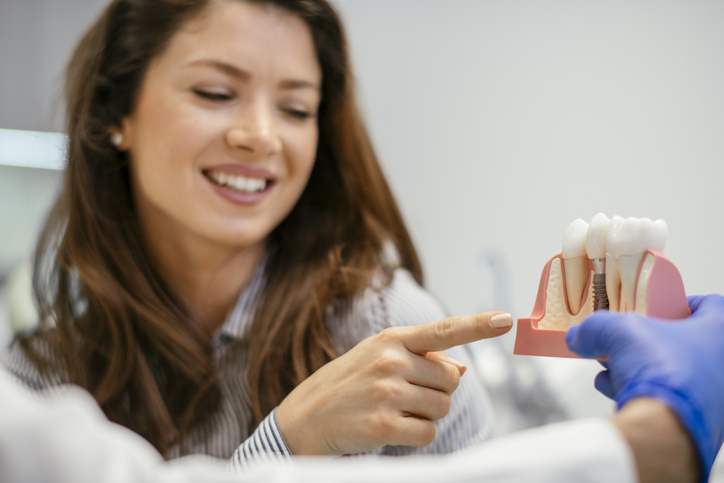Receding Gums? Discover the Gentle, Suture-Free Fix Changing Smiles in Phoenix
At Arizona Periodontal Group in Phoenix, AZ, we often see patients who are frustrated or even embarrassed by the telltale signs of gum recession: overly long-looking teeth, sensitivity to hot or cold, or the fear that their teeth are becoming vulnerable. The good news is that there is now a world-class solution that can restore your gumline without the pain, downtime, or invasiveness of older grafting procedures: the Pinhole Surgical Technique (PST™).
Under the care of Dr. Ariel Trujillo, one of the few periodontists in Phoenix certified to perform PST™, we have witnessed life-improving results—smiles restored, sensitivity relieved, teeth protected, and patients free to eat, laugh, and speak without worry.
In this post, you’ll learn about what makes PST™ so transformative, the dental benefits (especially root protection), what to expect during treatment, recovery, cost considerations in Phoenix, and the most common questions patients ask.
Why Gum Recession Matters — More Than Just A Cosmetic Issue
When your gums recede, they expose parts of your tooth root that were never meant to be exposed. That has several negative consequences:
- Sensitivity — Exposed roots are often more sensitive to temperature, sweets, and touch.
- Higher risk of root decay — The root surface is softer than enamel, making it more vulnerable to cavities if left unprotected.
- Aesthetic concerns — Receding gums can make teeth look longer, asymmetric, or less youthful.
- Progressive damage — Gum recession often signals that periodontal support is weakening; if untreated, it can lead to further bone loss or even tooth mobility.
At Arizona Periodontal Group, we view gum recession not just as a cosmetic concern but as an underlying health issue. The sooner it’s addressed, the better chance we have to preserve your teeth for life.
What is the Pinhole Surgical Technique (PST™)?
PST™, sometimes called the Chao Pinhole® Surgical Technique, is a minimally invasive, suture-free, graft-free alternative to traditional gum grafting. Here’s how it works:
- Tiny pinhole: Instead of making large incisions, the periodontist makes a tiny hole (literally a “pinhole”) in the gum tissue above the affected area.
- Loosening the gum tissue: Using proprietary instruments, the gum tissue is gently loosened and slid downward (or upward, depending on tooth position) to cover the exposed root surfaces.
- Stabilizing with collagen strips: Tiny collagen strips are inserted under the repositioned gum tissue to provide support and encourage natural reattachment.
- Healing and reattachment: Over time, the gum tissue heals and fuses to the tooth, covering the root. Because there’s no cutting or suturing, healing is faster and more comfortable.
Because PST™ uses your existing gum tissue rather than harvesting grafts, it preserves the original blood supply and tends to heal very naturally.
Benefits of PST™ — and How Life Can Change for You
1. Immediate and beautiful aesthetic transformation
One of the most emotionally rewarding parts of this procedure is how fast you can see improvement. The repositioned gum tissue covers the exposed roots almost immediately. Many patients leave with a dramatically improved smile.
2. Less pain, less trauma, less downtime
Because there are no large incisions, no sutures, and no secondary donor site (like the palate), patients typically experience minimal discomfort, swelling, or bruising. Many return to normal activities within 24–48 hours.
3. Root protection
Covering the exposed root surfaces helps reduce sensitivity and protects against root caries (decay). Thought of another way, you are safeguarding what remains of the tooth’s foundation.
4. Treat multiple areas in one session
Traditional grafting often limits you to treating 1–3 teeth per surgery, due to donor tissue constraints. With PST™, several areas or multiple teeth can often be addressed in a single visit.
5. Long-term stability
When properly performed and maintained, the results of PST™ can last many years. Many patients report high satisfaction and long-term stability.
The procedure: step by step
Here is a typical flow of what to expect when you undergo PST™ at Arizona Periodontal Group:
Before the procedure
- A comprehensive exam and diagnosis will confirm whether you’re a candidate (you need sufficient gum tissue and periodontal health).
- We will discuss your medical/dental history, your expectations, and whether any preparatory work (cleaning, periodontal therapy) is needed.
- We will explain pain management, aftercare, and costs so you have full transparency.
Day of the procedure
- Local anesthetic — We numb the area to ensure your comfort. Some patients may opt for conscious sedation if desired.
- Pinhole entry — A tiny opening is made in the gum tissue above the recession.
- Tissue mobilization — We gently loosen and reposition the gum tissue over the exposed root(s).
- Stabilization — Collagen strips are inserted to help anchor the tissue in its new place and promote healing.
- Final check and cleanup — We confirm the tissue coverage is correct and flush or clean the area. Because there are no sutures, there’s no suture removal appointment.
Typically, the entire procedure takes less than one hour (though it can vary by how many teeth are treated).
Recovery timeline & aftercare
One of the greatest advantages of the Pinhole Surgical Technique is how gentle and fast recovery can be.
Recovery timeline (typical)
- First 24–48 hours: mild soreness, tenderness, or slight swelling may occur, but most patients are alert and able to resume light normal activities.
- Days 2–7: gradual soft tissue healing occurs. You may continue to adhere to a soft-food diet and gentle oral hygiene in unaffected areas.
- By day 7–14: gums are often mostly healed and stronger, and many patients can resume more normal brushing/flossing under guidance.
- Long term: continued maturation and strengthening of gum attachment over weeks to months. Full stability is generally established within a few months.
Aftercare best practices
To support healing and maximize results, your care regimen will likely include:
- Avoid brushing/flossing the treated area for a designated number of days as instructed.
- Use a gentle mouth rinse (often a prescribed antimicrobial rinse) to keep the area clean without disturbing the tissue.
- Stick to a soft-food diet (e.g. yogurt, mashed potatoes, smoothies, soups) for the first few days. Avoid crunchy, hard, spicy, or very hot foods.
- Avoid straws, tobacco, smoking, or anything that causes suction in the mouth.
- If swelling occurs, apply cold compresses to the outside cheek (as your provider recommends).
- Take any prescribed or over-the-counter pain relief or anti-inflammatory medication as directed.
- Follow-up visits: We’ll monitor healing and guide you when safe to resume full hygiene.
- Maintain excellent oral hygiene both in the treated and untreated areas to ensure long-term success.
Pain management
While pain is minimal compared to conventional grafts, some discomfort is normal:
- During the procedure: Local anesthesia ensures you feel numb and comfortable.
- After the procedure: Many patients report mild soreness or tenderness (1–2 on a scale of 10).
- Over-the-counter pain relievers (Ibuprofen, acetaminophen) often suffice.
- If needed, your periodontist may prescribe a mild analgesic or anti-inflammatory agent.
- Because healing is fast, prolonged or severe pain is uncommon, but if you experience anything unexpected, you should contact us immediately.
Is PST™ right for you? Who is a candidate — and who is not?
PST™ is highly effective, but it’s not suitable for every case. Common eligibility criteria include:
Good candidates generally have:
- Receding gums with sufficient existing gingival tissue to reposition (i.e., not severely thin or lacking tissue).
- Stable periodontal health (i.e., no uncontrolled periodontal disease).
- Healthy bone support (minimal bone loss in the treated areas).
- Good general health and ability to follow postoperative care.
Situations where PST™ may not be recommended:
- Severe gum or bone loss where tissue is too thin or deficient.
- Active inflammation or infection in the area.
- Complex anatomical or structural limitations.
- Those needing extensive grafting or augmentation beyond what repositioning can achieve.
During your consultation, Dr. Trujillo will carefully evaluate your gums, bone status, and overall health to determine whether PST™ is a safe and effective option for you.
Frequently Asked Questions
How long does the procedure take?
Typically under one hour, though treating multiple teeth can extend the session slightly.
Does it hurt?
Not during the procedure, thanks to local anesthesia. Afterward, discomfort is usually mild and well-managed with simple analgesics. Significant pain is rare.
What’s the recovery like?
Most people are back to normal daily routines within 24–48 hours. Full soft tissue healing typically occurs within 1–2 weeks.
When can I eat normally?
Stick to a soft diet for the first days. Gradually return to regular foods as comfort and tissue healing permit (usually within 5–7 days).
Will there be stitches?
No—PST™ is suture-free. The tiny entry point typically “disappears” quickly.
Are the results permanent?
With good oral hygiene and regular care, PST™ outcomes can last many years. Some relapse is possible if risk factors (brushing too hard, gum disease) are not controlled.
Does insurance cover it?
Yes, many PPO dental insurance plans classify recession correction as “periodontal” care. In many practices, insurance covers 50–80% of the cost.
What is the cost in Phoenix, AZ?
While exact pricing depends on how many teeth are treated and your individual case, local sources indicate PST™ is typically less expensive overall than multiple traditional graft surgeries (because of fewer appointments).
To give rough ballpark figures: many practices in Phoenix might charge several hundred to over a thousand dollars per tooth (or per treatment area). (Note: you should confirm the cost directly during your consultation.)
Why choose Arizona Periodontal Group — and Dr. Trujillo?
- Certified provider: Dr. Trujillo is among the limited number of periodontists in Phoenix certified to perform the Pinhole Surgical Technique.
- Patient-first care: We focus on delivering comfort, clear communication, and real results.
- Advanced technology: We stay at the forefront of minimally invasive periodontal procedures.
- Local trust: Serving Phoenix and the surrounding region, we understand the unique needs of our patients.
- Comprehensive care: If PST™ proves not to be ideal for your case, we offer a full suite of periodontal therapies, including grafting, laser therapy (e.g., LANAP®), implant placement, gum disease treatment, and more.
A patient story (anonymized example)
One patient in Phoenix came to us ashamed of how much longer their teeth looked compared to friends. They were also experiencing sensitivity to cold drinks and brushing at night. After a PST™ procedure covering four teeth on one side, they left the office smiling, with the gum margin visibly restored and no discomfort beyond mild tenderness. Over the following months, the gum attachment stayed healthy, and the patient regained confidence in their smile. Moments like these remind us why PST™ is such a game-changer.
Take the Next Step — Schedule Your Consultation
If you live in Phoenix or nearby and are noticing signs of gum recession—whether it’s tooth sensitivity, longer-looking teeth, or roots showing—don’t wait until the problem worsens. The sooner we intervene, the more easily we can correct it and protect your dental health.
Contact Arizona Periodontal Group today to schedule your PST™ consultation with Dr. Trujillo:
- Phone: (602) 459-9459
- Address: 1717 W. Northern Ave., Suite 104, Phoenix, AZ 85021
- Online: Fill out a request form or read more about the procedure.
During your consultation, we’ll:
- Examine your gums, bone, and periodontal health
- Determine whether PST™ is suitable (or if another option is better)
- Review detailed cost, insurance, and payment options
- Walk you through what to expect step by step
The Pinhole Surgical Technique: The Alternative You’ve Been Waiting For
The Pinhole Surgical Technique offers something many patients have longed for: an advanced, low-trauma way to restore gum health, protect vulnerable tooth roots, and bring back a youthful, balanced smile. At Arizona Periodontal Group, we believe that a smile is more than cosmetic: it’s your front line of protection for your teeth, your confidence, and your well-being.
If you’re ready to explore whether PST™ is right for you, we invite you to call us or send a form to start your journey. Let us help you reclaim not just healthier gums, but a more confident, comfortable life.





